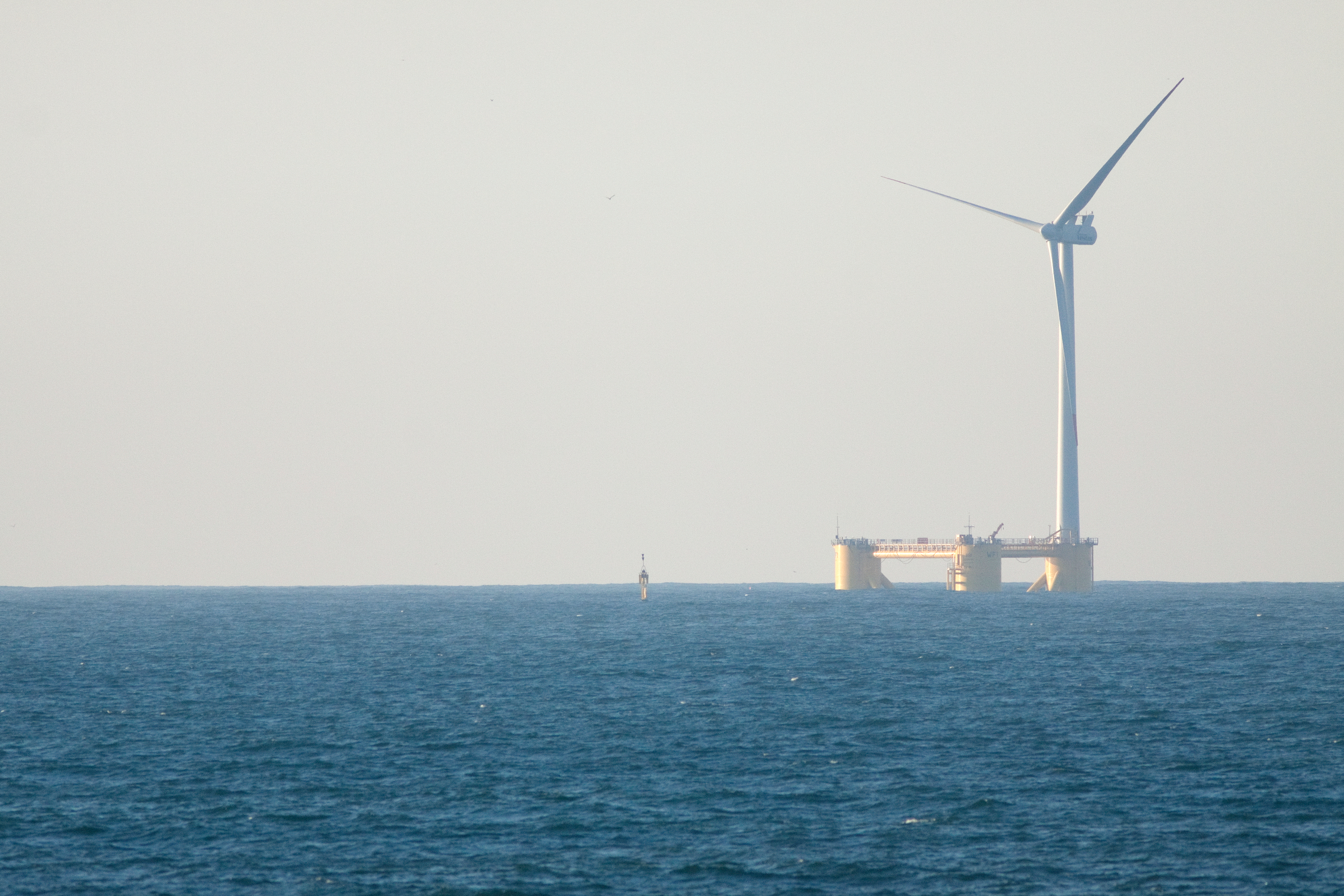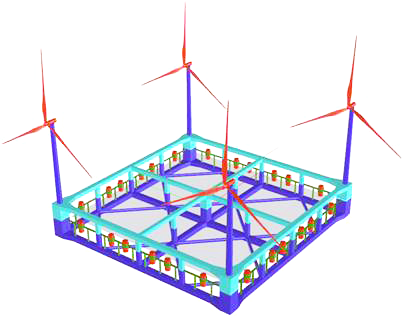
A few decades ago, harnessing the power of the ocean’s wind and hydrokinetic energy seemed impossible. In August, the nation’s first offshore wind farm was established in Rhode Island and it is estimated it will produce up to 30 megawatts (MW) of energy, enough to power a small town.
Researchers at Texas A&M University are using existing technology and experience in the offshore oil and gas industry to apply the designs of a multi-unit floating offshore wind turbine in order to generate economically competitive, infinitely renewable, no waste or carbon emission energy.
Dr. Moo Hyun Kim, professor in the Department of Ocean Engineering, and Dr. Y. H. Bae, an assistant professor at Jeju National University in South Korea who received his Ph.D. in ocean engineering from Texas A&M, have developed a state-of-the-art numerical simulation program to design, study and optimize the multi-unit offshore wind turbines in oceans deeper than 50 meters.
 “The Atlantic Ocean is best suited for wind energy,” said Kim. “Texas also has some potential. There will be more floating wind turbines in deeper water depths in the future since deeper waters are less sensitive to regulations and opposition from residents.”
“The Atlantic Ocean is best suited for wind energy,” said Kim. “Texas also has some potential. There will be more floating wind turbines in deeper water depths in the future since deeper waters are less sensitive to regulations and opposition from residents.”
Typically, a floating offshore wind turbine is a complicated structure that needs more sophisticated control and station keeping compared to a fixed wind turbine on land.
“A multi-unit floating offshore wind turbine is an engineering design marvel,” said Kim. “It consists of multiple wind turbines on a single floating platform. It can also serve multiple purposes hosting other ocean energy converters, such as wave and current energy converters and solar panels.”
Predicting and simulating the global performance of such a complicated energy station in ever-changing ocean environments is a big challenge.
The researchers’ numerical simulation program — FAST-CHARM3D — calculates the dynamics between the entire turbine structure, such as the aero-rotor-tower-controller-float-mooring units, in real time. The energy station can host multiple wind turbines and wave energy converters. As a result, several aspects of the energy station can be computed and analyzed by a single run of the program.
The American Bureau of Shipping, POSCO and the United States Department of Energy’s Research Partnership to Secure Energy for America program supported the prior stage of FAST-CHARM3D development.
Kim contributed to the mooring dynamics module of the most recent version of FAST, the most widely used wind-turbine program in the world, developed by the National Renewable Energy Laboratory.
“The floating offshore wind turbine industry is still emerging,” said Kim. “While FAST-CHARM3D is not commercialized yet, the American Bureau of Shipping, the world’s largest offshore/ship certification agency, has already adopted it to develop their design guidelines for offshore floating wind turbines.”
Broadening the spectrum of renewable energy, the researchers foresee adding structures collecting ocean current energy and solar energy to the existing multi-unit offshore structure. A well-operated offshore energy station could combine wind energy, wave energy, ocean currents energy and solar energy to provide on-demand power for land-based or sea-based activities.
When wind turbines may not be able to generate enough power, these other sources of energy could compensate, ensuring a near-constant supply of electricity.
Advancement in integration of renewable ocean energy sources into one single ocean energy station could meet specific demand by U.S. armed forces to provide energy for a foreign remote location or a mobile offshore military base.
Kim’s unique computer simulation program can resolve the grand challenge of integrating and controlling a multi-source energy station in real-time from a remote location. It can optimize and improve the operations, production and efficiency of the energy station in ever-changing ocean environments.